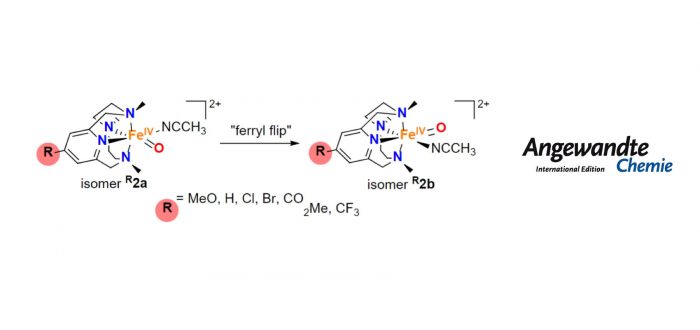Two oxoiron(IV) isomers ( R2a and R2b) of general formula [FeIV(O)(RPyNMe3)(CH3CN)]2+ are obtained by reaction of their iron(II) precursor with NBu4IO4. The two isomers differ in the position of the oxo ligand, cis and trans to the pyridine donor. The mechanism of isomerization between R2a and R2b has been determined by kinetic and computational analyses uncovering an unprecedented path for interconversion of geometrical oxoiron(IV) isomers. The activity of the two oxoiron(IV) isomers in hydrogen atom transfer (HAT) reactions shows that R2a reacts one order of magnitude faster than R2b, which is explained by a repulsive noncovalent interaction between the ligand and the substrate in R2b. Interestingly, the electronic properties of the R substituent in the ligand pyridine ring do not have a significant effect on reaction rates, Overall, the intrinsic structural aspects of each isomer define its relative HAT reactivity, overcoming changes in electronic properties of the ligand.
The results of this project have been recently published in Angewandte Chemie:
V. Dantignana, M. C. Pérez-Segura, P. Besalú-Sala, E. Delgado-Pinar, Á. Martínez-Camarena, J. Serrano-Plana, A. Álvarez-Núñez, C. E. Castillo, E. García-España, J. M. Luis, M. G. Basallote, M. Costas, and A. Company
“Characterization of a Ferryl Flip in Electronically Tuned Nonheme Complexes. Consequences in Hydrogen Atom Transfer Reactivity”
Angew. Chem. Int. Ed., 2022, ASAP
DOI: 10.1002/anie.202211361
Girona, Nov. 10, 2022
For more info: gestor.iqcc@gmail.com

